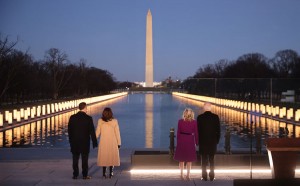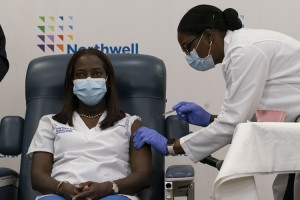COVID-19: One Year Later

A candlelit vigil on the National Mall in Washington, D.C., on Jan. 19, 2021, honored the hundreds of thousands of Americans killed by COVID-19.
Credit: © Chip Somodevilla, Getty Images
One year ago, on March 11, 2020, the World Health Organization declared the coronavirus disease COVID-19 a pandemic—that is, a disease that spreads over an extremely wide geographic area. In one year, the deadly respiratory disease has infected nearly 115 million people and killed more than 2.5 million people worldwide.
The first COVID-19 cases occurred in Wuhan, China, near a seafood and live animal market. This fact suggested to scientists that the disease may be zoonotic (spread from animals to people). Researchers proposed that, like the related diseases MERS (Middle East respiratory syndrome) and SARS (severe acute respiratory syndrome), COVID-19 may have its origin in bats. Further analysis of the virus SARS-CoV-2 showed that it had clearly originated in bats. SARS-CoV-2 stands for severe acute respiratory syndrome coronavirus 2. How the virus crossed over into human beings has not been determined. After the virus entered humans, human-to-human transmission became the chief way in which the disease spread.
As the pandemic progressed, some authorities closed schools and such nonessential businesses as restaurants, movie theaters, and hair salons. Some officials issued stay-at-home orders. The orders forbade people from leaving their homes except for such necessary activities as working at an essential job, buying food, or seeing a doctor.
To pass time over the long year and help stay cheerful while stuck at home, many people turned to baking treats, reading books, and making arts and crafts. For instance, some people recreated famous paintings. Such museums as the Getty Center in Los Angeles, California, provided people with prompts. Then, using household products and costumes buried at the bottom of toy chests, people recreated famous works of art. Emanuel Leutze’s “Washington Crossing the Delaware,” for example, became “Wagon Crossing the Street.” Re-enacting masterpieces was a great way to past the time, while you waited for your treats to bake.

Sandra Lindsay, left, a Black nurse, is injected with the COVID-19 vaccine developed by Pfizer on Dec. 14, 2020, in the Queens borough (section) of New York City. The rollout of the vaccine, the first to be given emergency authorization by the Food and Drug Administration, begins the biggest vaccination effort in U.S. history.
Credit: © Mark Lennihan, Getty Images
In December 2020, hope began to arrive in the form of vaccines. Vaccines are special medicines that can help make a person immune to a particular disease. The long-awaited “V-Day,” short for Vaccine Day, arrived in the United States on Monday, Dec. 14, 2020. Sandra Lindsay—a nurse at a hospital in the Queens borough (section) of New York City—was hailed as the first person in the United States to receive an authorized COVID-19 vaccination.
Not everyone who wants a vaccine has been able to get one right away. The first doses were given to healthcare workers. Then, frontline workers (workers likely to encounter the disease) followed, along with people vulnerable to the virus, including the elderly and those with such risk factors as obesity or diabetes.
Since December, nearly 10 percent of the U.S. population has received the vaccine. Tens of thousands more get vaccinated each day, raising hopes that the end of the pandemic is near.


